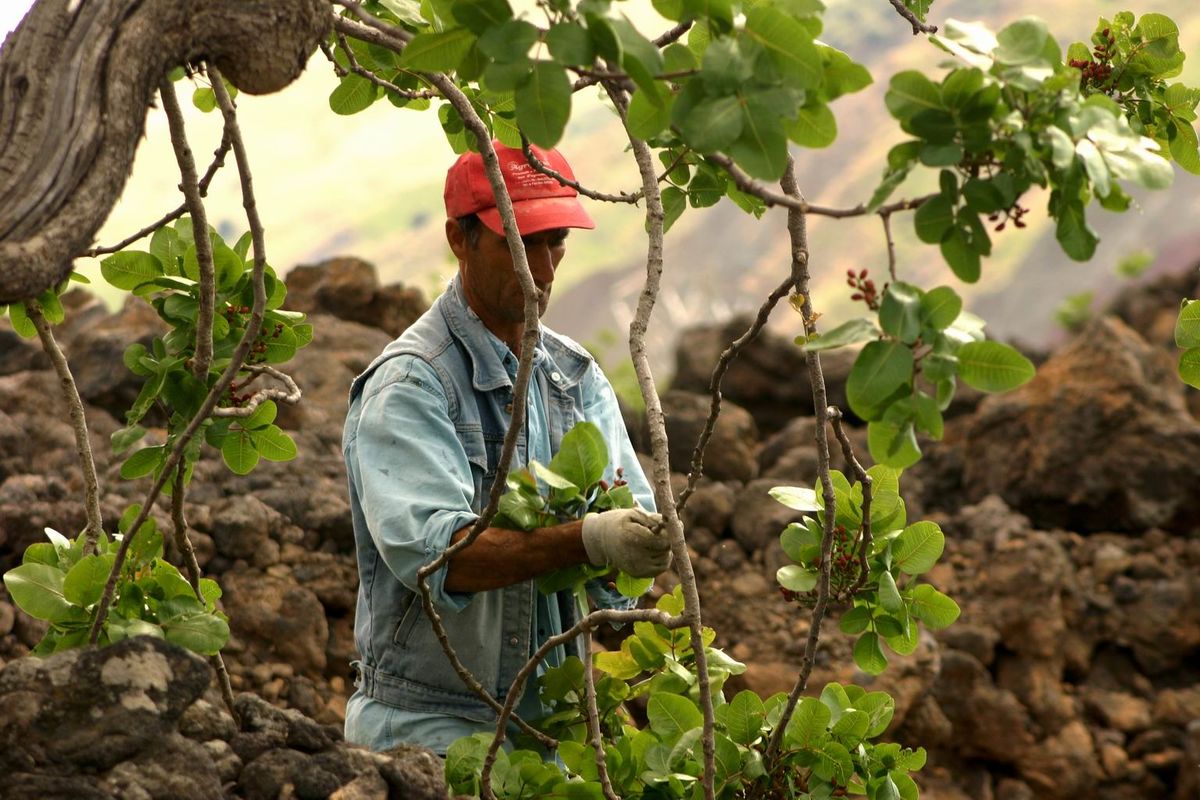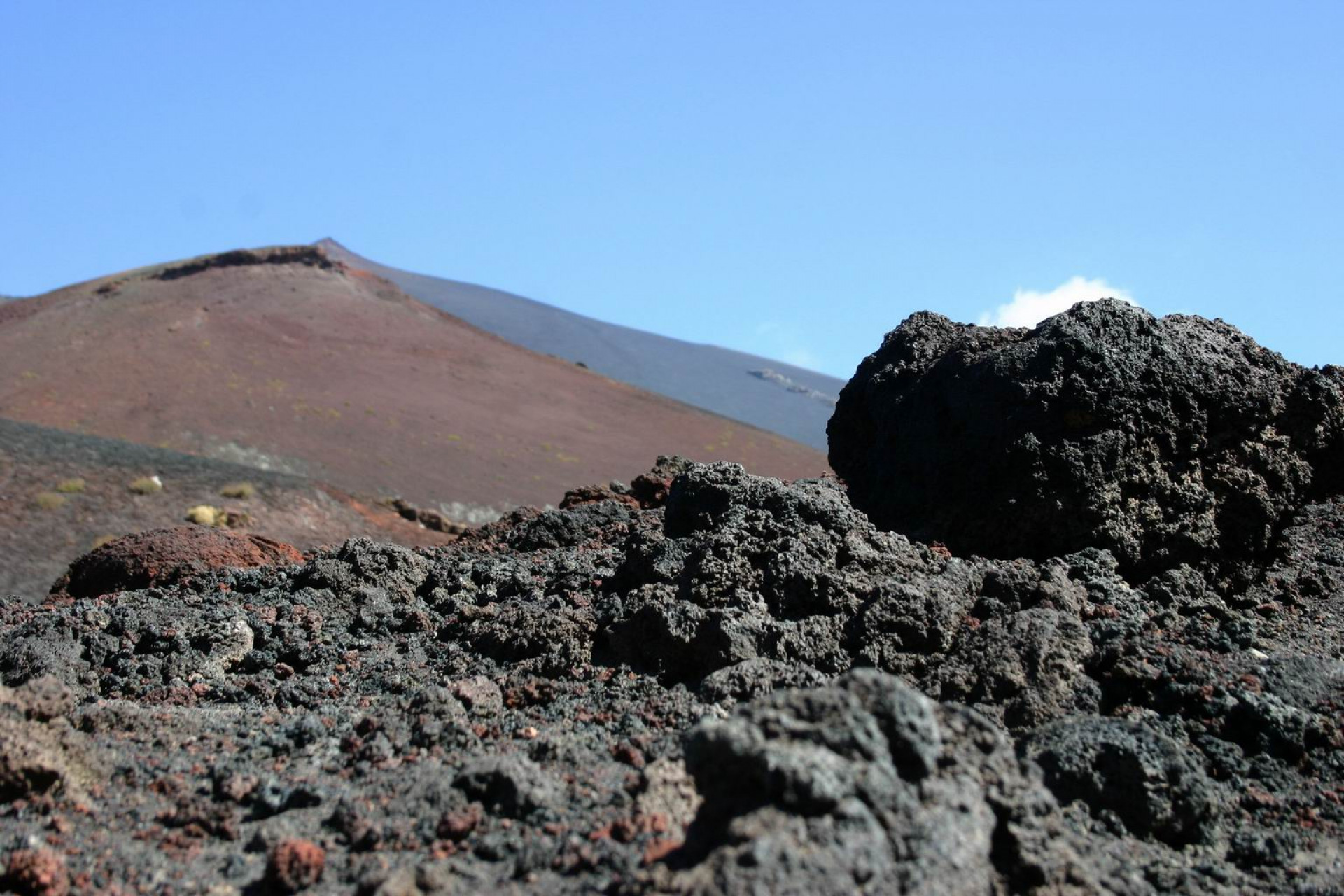Mount Etna: "The Mountain"
Greek, Latin, Arabic or Sicilian? The origin of Etna's name
In Sicily, Mount Etna is called “The Mountain” because it is really huge: its summit reaches an elevation of 3,340 meters (around 11,000 feet), making it the highest peak in Italy following the Alps. Etna is the highest active volcano in Europe, originated from the subduction of the African plate under the Eurasian plate. In June 2013, it was added to the list of UNESCO World Heritage Sites.
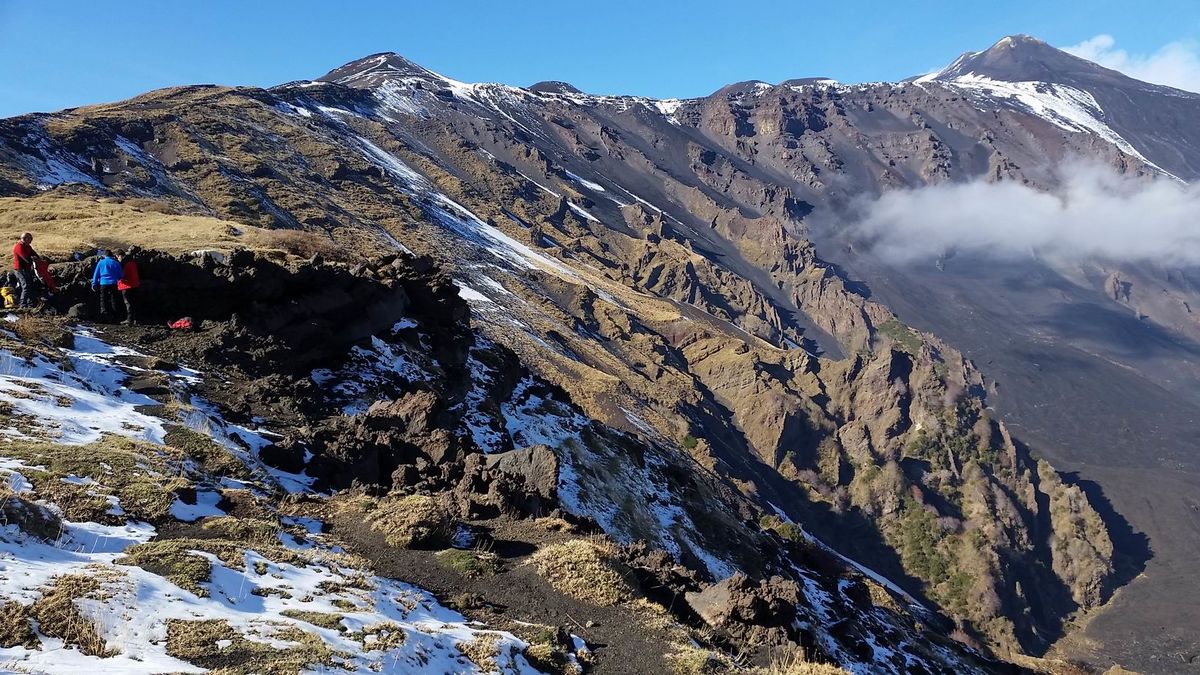
It is also known as Mongibeddu in Sicilian, or Mongibello in Italian. Literally, monte means “mountain” and bello means “beautiful”; however, the Sicilian word comes from the Latin mons and the Arabic جبل jabal, both meaning mountain, which produces a tautological place name, namely "mountain mountain".
Etna is a very important resource for the island, both for agriculture, thanks to its rich volcanic soil, and tourism. From a touristic point of view, Mount Etna is visited mainly by enthusiasts willing to ski or hike in a spectacular landscape or to observe the astonishing fire fountains during an eruption. Indeed, the volcano is famous worldwide for its burning tongues of lava.
According to some, the name Etna originates from the Greek aithō, meaning "I burn". The volcano has been active for thousands of years, alternating between dormant periods and volcanic eruptions. However, its normal activity consists in emitting a daily plume of gas and smoke. The most powerful eruption was recorded in 1669, when impressive explosions partially destroyed the summit and lava flows even reached the city of Catania and the sea. During the more recent eruption of 1993, the lava reached the town of Zafferana, but it was diverted effectively and the town was saved. Nowadays, in the case of a big eruption, the airport of Catania may be closed due to the quantity of airborne volcanic ash and lapilli that can be dangerous for aircrafts.
How to reach Mount Etna and what to do
By car, it is possible to reach two touristic areas from different sides: Piano Provenzana from Linguaglossa, on the northeastern side of the volcano, and Rifugio Sapienza on the southern one from Nicolosi.
In the southern part of Mount Etna, you can find the Crateri Silvestri, two quite old craters created after an eruption in 1892 at 2,000 meters (around 7,000 feet) above sea level. You can climb them up and walk on various natural trails, diversified according to length and level of difficulty, and also stand up right inside the smaller one. From the top of these craters, you can stare at a breathtaking panorama in all directions.
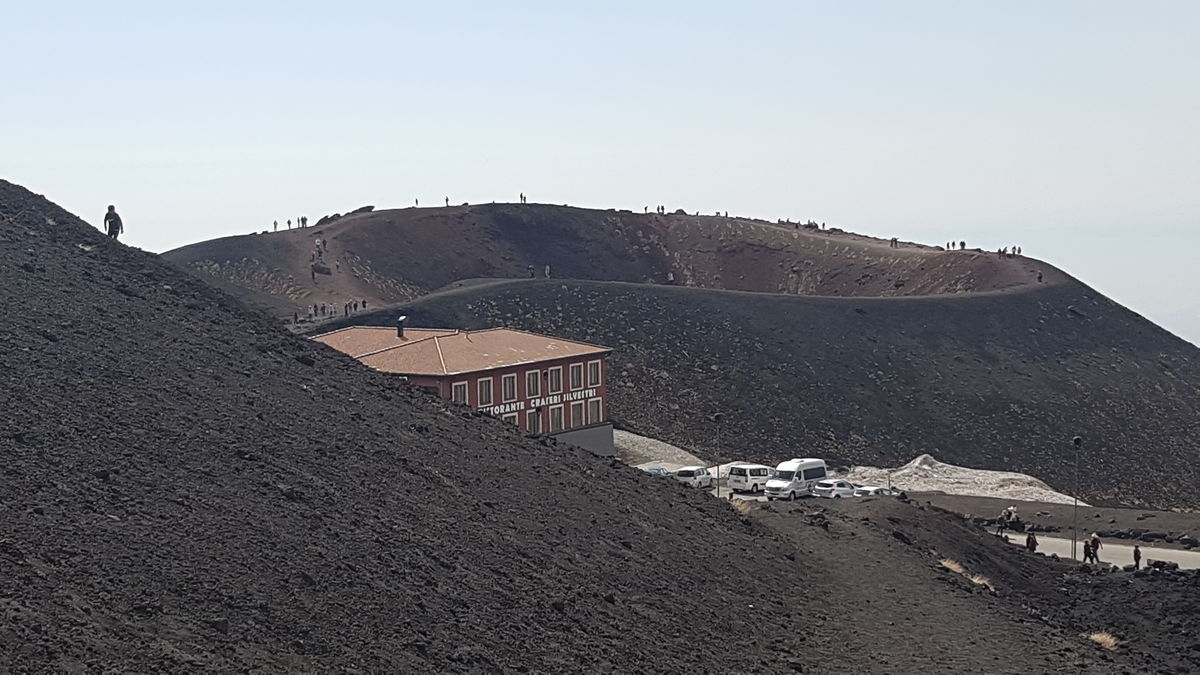
From Rifugio Sapienza, at 1,923 meters high, you have the opportunity to take the cableway and reach the altitude of 2,500 meters. If you choose to take the cable car, once off you will meet a local guide who will take you on a jeep to reach the authorized crater area at 2,920 meters. This excursion lasts about 2 hours. It is recommended to wear properly, especially with comfortable shoes. In case of excessive snow, the cable way will not work, but you can still walk up to the Crateri Silvestri. However, cable cars are used not only for the excursions, but also to reach the ski slopes in winter. Additionally, there are various other facilities to reach different altitudes and slopes, such as the chairlift and ski lift.
Both Rifugio Sapienza and Piano Provenzana are the perfect venue for skiers, snowboarders, cross-country skiers and ski tourers, although many consider the latter to be best-equipped. It is a ski area situated at 1,810 meters above sea level. The ski slopes are surrounded by a beautiful pinewood and an unexpected view of the Ionian Sea, creating a heart-stopping contrast between the intense blue of the sea and the pure whiteness of the snow covering the majestic crater. Conversely, Rifugio Sapienza shows a very different scenery, with no vegetation but lava stones characterizing this volcanic landscape. Both ski stations were destroyed by the eruption of 2002 but were rebuilt afterwards.
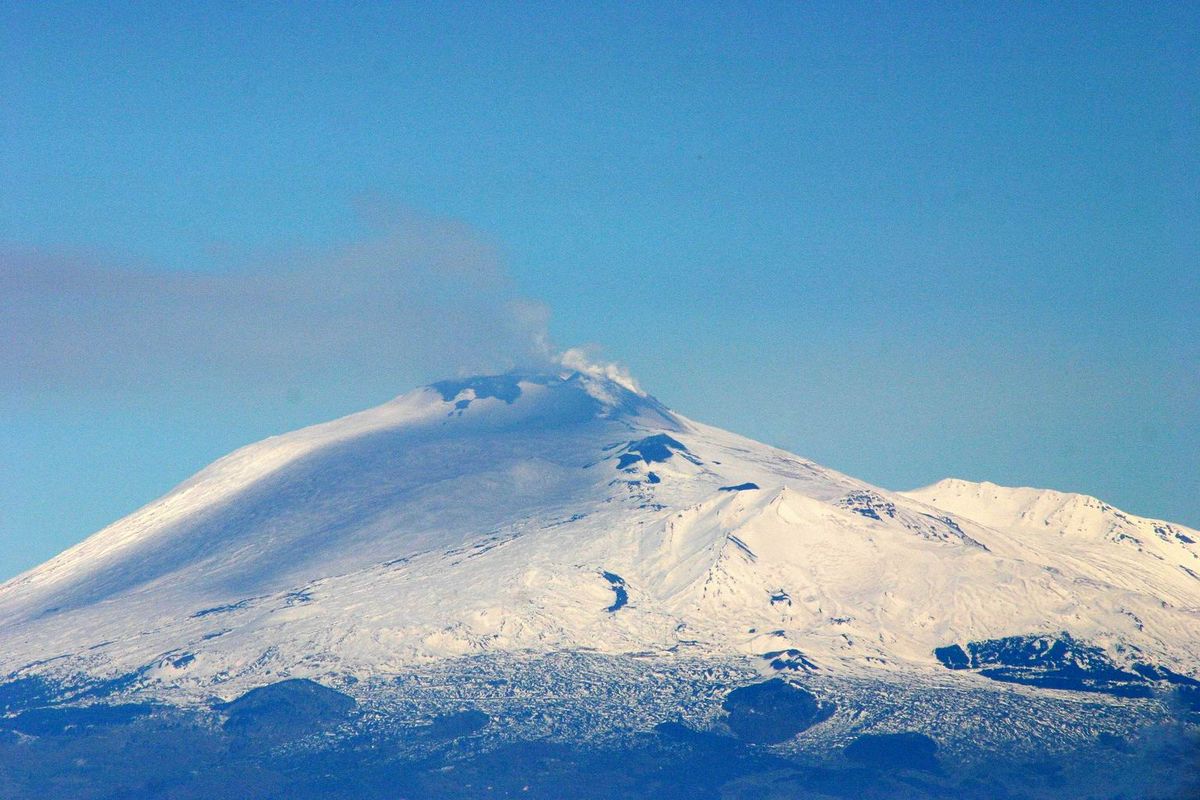
If you visit Sicily from April to October, you cannot miss a hike along one of the Etna's pathways. There are several trails presenting a different level and, to choose the one fitting you best, we highly reccomend you to go with an expert nature guide, who will also respond to any enquiries on the historic, natural, and mythological aspects of Mount Etna.
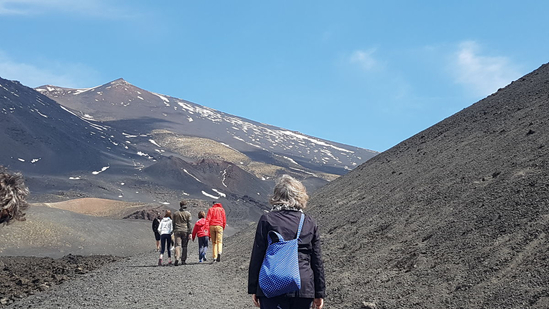
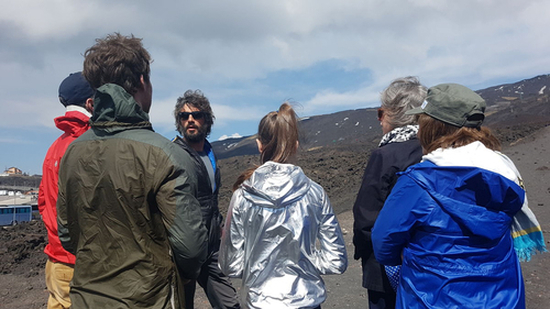
Rifugio Sapienza is also a small hotel with a restaurant inside where you can taste local foods and a glass of wine to have a warm rest after climbing up in the snow. Between the parking lot and the access to the Crateri Silvestri there is also a bar, where to have a coffee break and use the restrooms. Inside you can taste a local liquor, called “Il fuoco dell’Etna” (Etna’s fire) because of the burning sensation felt after drinking it, made with a secret recipe and with an alcoholic content of 70%. Its color can’t but be red, of course, and it tastes of Sicilian citrus and herbs. Only for the brave, recommended after meals.
Why Mount Etna is unmissable for food&wine lovers
The vegetation growing on the mountain changes according to the altitude. In the lowest area, up to 915 meters (3,000 feet), the soil is fertile and rich in vineyards, olive trees, citrus plantations and orchards. Towns are located in the lower slopes, like those in the northern side of Catania, but become less frequent as the height increases, where the mountain is covered by forests of chestnut, beech, oak, pine and birch trees. Starting at 1,980 meters (6,500 feet), there is only ash, sand and fragments of lava, with only a few plants.
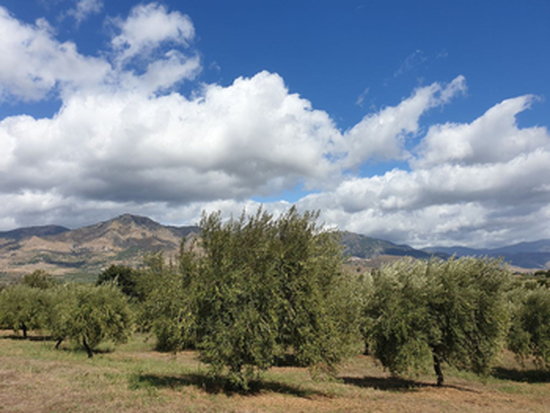
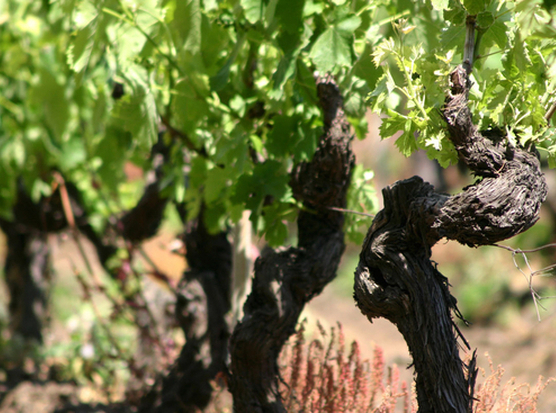
It is well-known that volcanic ash enriches the soil, which is precisely why an abundant vegetation grows on the unique terroir of Mount Etna, such as olives, grapes and fruit. Here, wine production increased considerably in the last few years, since several wineries produce local wines with native grapes. In a glass of Etna wine, you can easily perceive the distinctive traits of the fertile lava soil that enriches its quality thanks to the particular characteristics of the land and the microclimate of the Etna area. For this reason, these wines are appreciated all over the world. Furthermore, their PDO certification testifies to their high quality and their specific manufacturing process.
Most wineries arrange walks through the vineyards, visits to the wine cellars, and amazing wine tastings. You are simply spoilt for choice, and it's easy to find a winery that grants what you ask for. There are the well-known wineries and the boutique ones. Some of them just offer group tours at fixed hours, some others give more intimate and exclusive experiences with special lunches and cooking lessons.
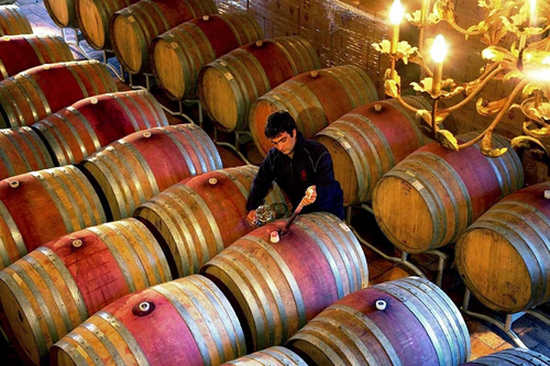
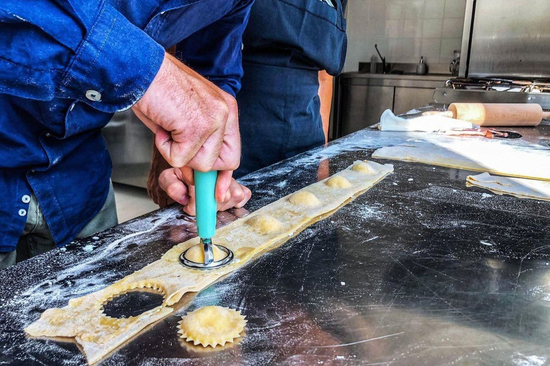
But if you believe wine is the only typical product of Mount Etna, think again. There is a large number of quality products, including PDO olive oil “Monte Etna”, PDO Etna prickly pears, PGI Etna cherries and PDO Sicilian Pecorino cheese. Many of them relate to the town of production, such as Nicolosi mushrooms, Zafferana Etnea honey, Belpasso nougats and Bronte pistachios. The latter are one of the most important and valuable thanks to the traditional harvesting and production methods, and as such are protected by Slow Food. Pistachios are available only every other year and production is small, which is why this high-quality product is greatly appreciated.
